Salem Lighthouses
Part 1. Bakers Island Light
In my entry on Marblehead Light I have briefly mentioned my sailing to Gloucester with Sergey: how we sailed there from Boston overnight and how, because of the complete lack of wind, we had to give up, drop the sails, and proceed under power.
So the next day we really wanted to avoid yet another humiliation, and though the wind in Gloucester Harbor was somewhat hesitant, we raised our sails and started slowly and deliberately tacking our way out of the harbor.
Beyond the general urge to get out to the ocean and to sail somewhere, we also had a specific research goal: come closer to two Gloucester lighthouses, get to know them, take their pictures and then report on them in this blog. Their time has not come yet; it surely will some day, but this time I’d like to tell you about the lighthouses of the town of Salem.
So: heading towards the Gloucester lights, we eventually emerged out of the harbor, and there, outside, found some quite reasonable wind which we immediately harnessed for our purposes.
Given the uncertainty with the wind and the weather forecast, the plan was to start heading back to Boston, and to split this return trip to two days. With that, the obvious place to spend the night was Salem Sound, and one of the four towns surrounding it: Marblehead, Salem, Beverley, and Manchester-by-the-sea. Marblehead and Salem we had visited many times before (both by land and by sea), and the name Beverley somehow didn’t conjure any positive association. This left Manchester-by-the-sea, where both us had never been, but where we always wanted to visit.
The harbor in Manchester is narrow and crowded, with nowhere to anchor; one needs to reserve a mooring; and I vaguely remembered from reading numerous cruising guides that it was possible to find a mooring there if you try hard enough. On our way we called a couple of places, and they told us that there was some kind of celebratory event in the harbor, and moorings were in a short supply, but they would do their best to help us, so please call over the radio when you get to the harbor entrance.
Heading towards Salem Sound we noticed a tall tower on the mainland. First we thought that it was Marblehead Light; then realized that neither its shape nor its location checked out, and decided that it was some other lighthouse; then couldn’t find anything matching on the chart, and came to the conclusion that it was an abandoned, unused lighthouse.
Turns out that it was not a lighthouse at all, but rather an observation tower in Manchester tracing back to World War II. Back then, towers like this one were used to watch for German submarines.
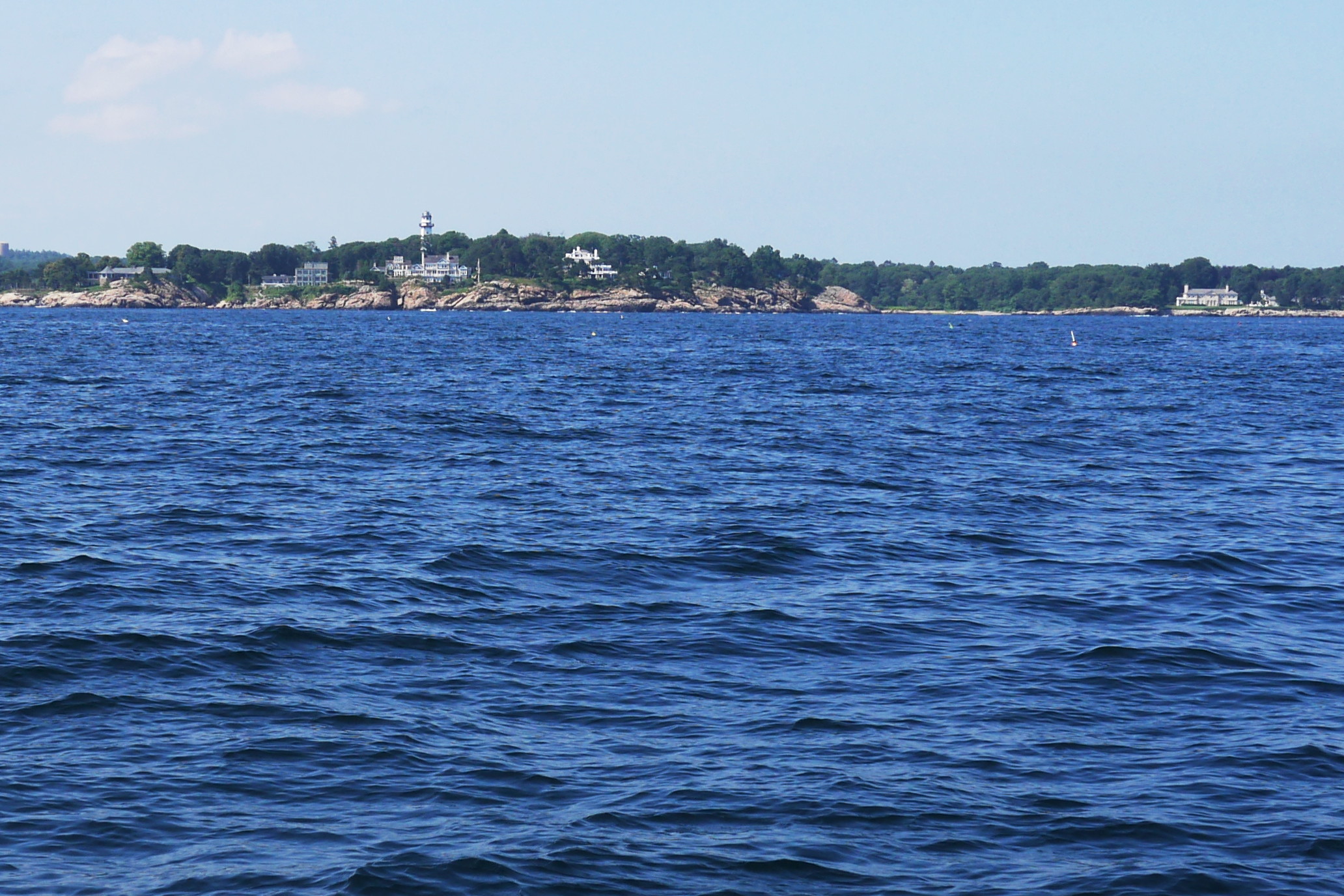
As we kept making our way towards Salem Sound, we saw another lighthouse, at which I wanted to take a closer look for quite some time: Baker Island Light, straight ahead and just outside of Salem Sound.
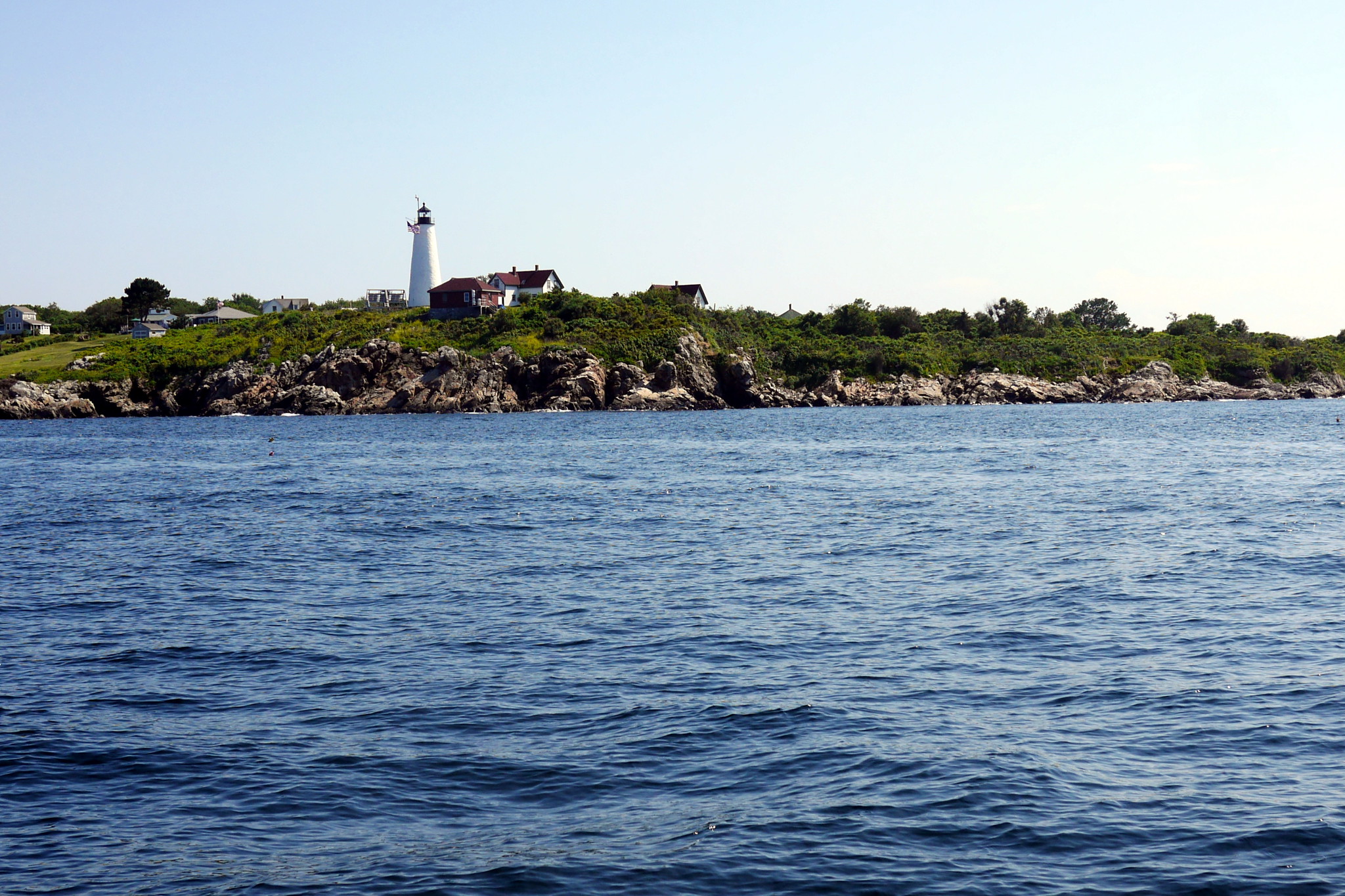
That’s the lighthouse I’d like to talk about this time.
Baker Island Light was the first lighthouse in Salem Sound. Salem Sound, I must tell you, is full with little islets and rocks, both above and below water; entering it in the dark is a nervous endeavor even in our times; I just can’t imagine how people could do that in the eighteenth century.
We know the early history of the light from this imposing man:
.jpg)
William Bentley (1759–1919), a Unitarian minister, scholar and journalist from Salem. Bentley knew 21 languages, seven of them fluently; his personal library was the second best in the US after that of Thomas Jefferson. I am just noting that in passing; it is not directly related to the lighthouse; I just enjoy meeting well-educated people.
Anyhow: the city of Salem was founded in 1626 (a Biblical age by American standards). Its name, by the way, is derived from shalom — Hebrew for “peace”. By the late 1700s it became a major center of the international maritime trade, and, consequently, the sixth largest city in the United States. And still, there were no navigation aids neither in Salem Sound, nor in Salem Harbor.
In 1791, the Salem Mariners Society voted to build an unlit navigational aid on Bakers Island (or, in their own words, “Aract a Backon on Bakers Island”). They allocated ₤20 for this worthy endeavor (dollars didn’t exist yet back then). Soon it turned out that that amount was pathetically insufficient even back then.
A subscription was announced, and it raised ₤89 more from fellow citizens.
“The intended Beacon was raised by a large and Jovial party”, records Bentley. Then he follows up criticizing the quality of work: the foundation was “very miserably laid”, he says — clearly, an inevitable outcome of a Jovial party. In any case, the fifty-seven-foot high red cone was definitely helping day-time navigation, and most definitely was completely useless at night.
It is not a surprise, then, that shipwrecks went on and on. The Mariners Society petitioned the US Congress to build a proper lighthouse already. President Washington gave his approval; the lighthouse was built in 1798. Unfortunately, I could not find any photos of that first lighthouse, but we know that it was a two-story keeper’s house with two lit towers on top of it. Back then, there was no technology to make light flash, so the only way to distinguish lighthouses was to make some of them double, and occasionally even triple.
In 1815 a serious storm had damaged the lighthouse so much that it was easier to rebuild the towers rather than to repair them. They only managed to build one new tower, though: an octagonal granite twenty-six-foot high tower. In less than two years, the merchant ship Union loaded with eighty thousand dollars worth of pepper from India, crashed into Baker Island rocks in the dark.
By the way, it looks like that it were specifically Salem merchants who first brought pepper to the United States. Here is, apropos, a cute quote from a 1905 book:
When Captain Jonathan Carnes set sail [from Salem] for Sumatra in 1795, on his secret voyage for pepper, nothing was heard from him until eighteen months later he entered with a cargo of pepper in bulk, the first to be so imported into this country, and which sold at the extraordinary profit of seven hundred per cent. This uncertainty which hung over the fate of the ship and cargo lent a romantic interest to those early voyages which this age, with its telegraph and steamship, has destroyed.
Other shipwrecks have followed the Union. It was said that the mariners were confusing Boston Light and Baker Island Light, both lights being single by then. The Salem Mariners society had begged for help again, and in 1820 a second tower was built on the island again: this one round, also granite, forty-seven-foot high. Presumably, the mariners were no longer confused.
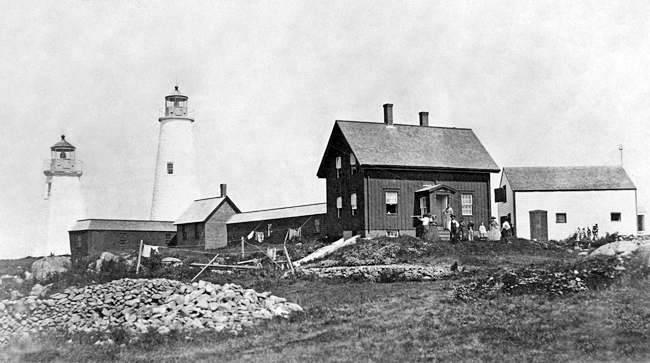
The locals affectionately called these two towers “Mr. and Mrs.” or “Ma and Pa”.
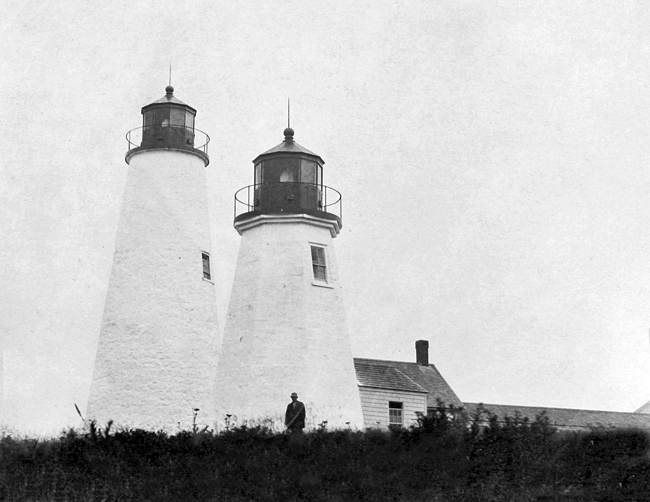
Then came the twentieth century: the age of American lighthouse decline. In 1926, they turned off and then demolished the smaller tower. (In general, there are very, very few working double lighthouses left. One such pair is not far from here, around Cape Anne, on Thatcher Island in Rockport. We saw their lights that night, while sailing to Gloucester. We will sail there soon, too!)
In the early 2000s, during yet another bout of budget cuts, the Coast Guard was giving lighthouses to non-profits for free. Baker Island Light went to an organization called Essex National Heritage Commission. They run trips to the lighthouse and even rent it out by night.
Unfortunately, the entire Baker Island is private, and we can’t land there on our own. So we just sail by and enjoy the views.
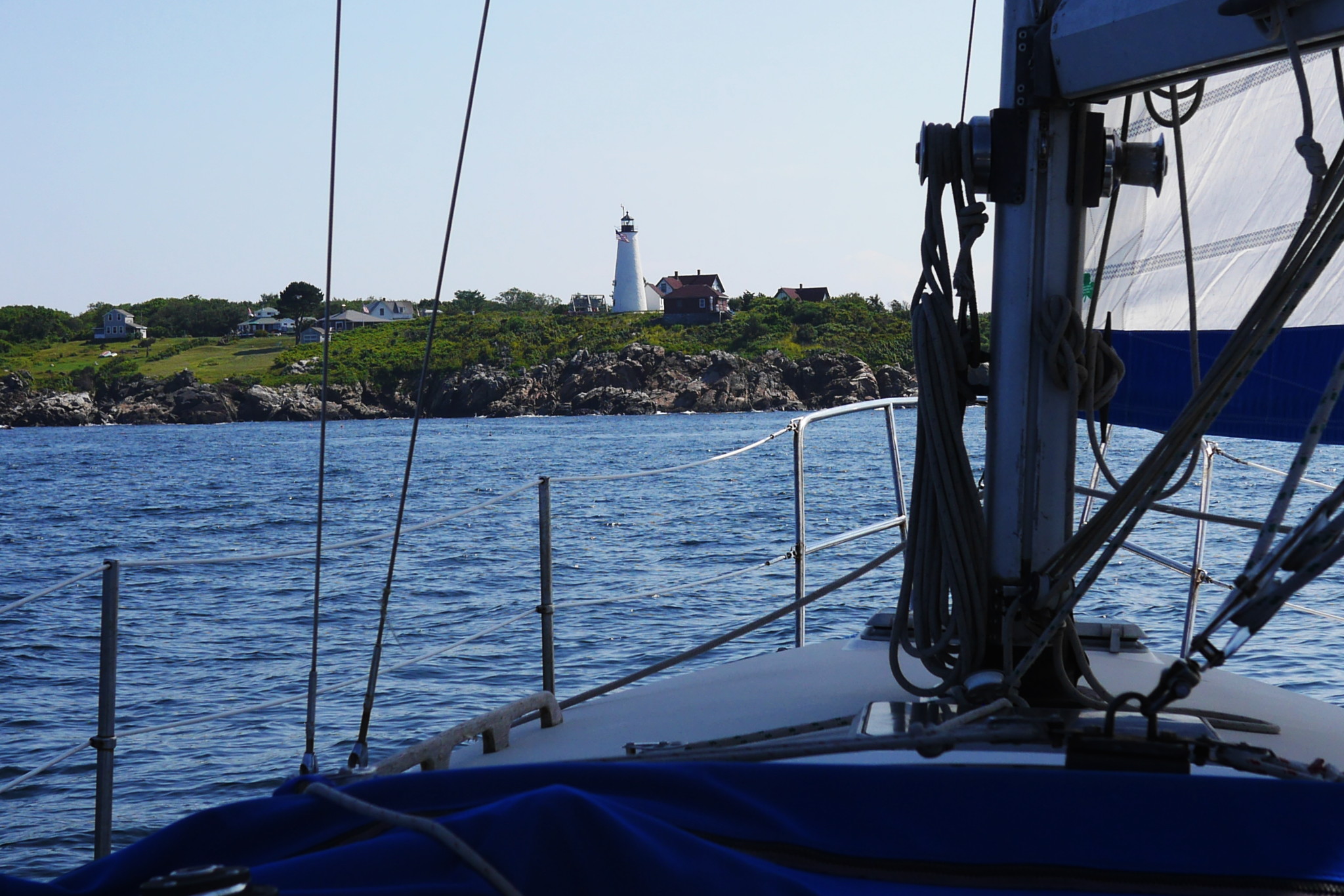
That time we were sailing by the lighthouse at daylight, and didn’t see it operating. At night, it flashes every 20 seconds alternating white and red: 3 cycles per minute.
Here is how the light and its island look from Salem through a long lens. The light is over 5 miles away.

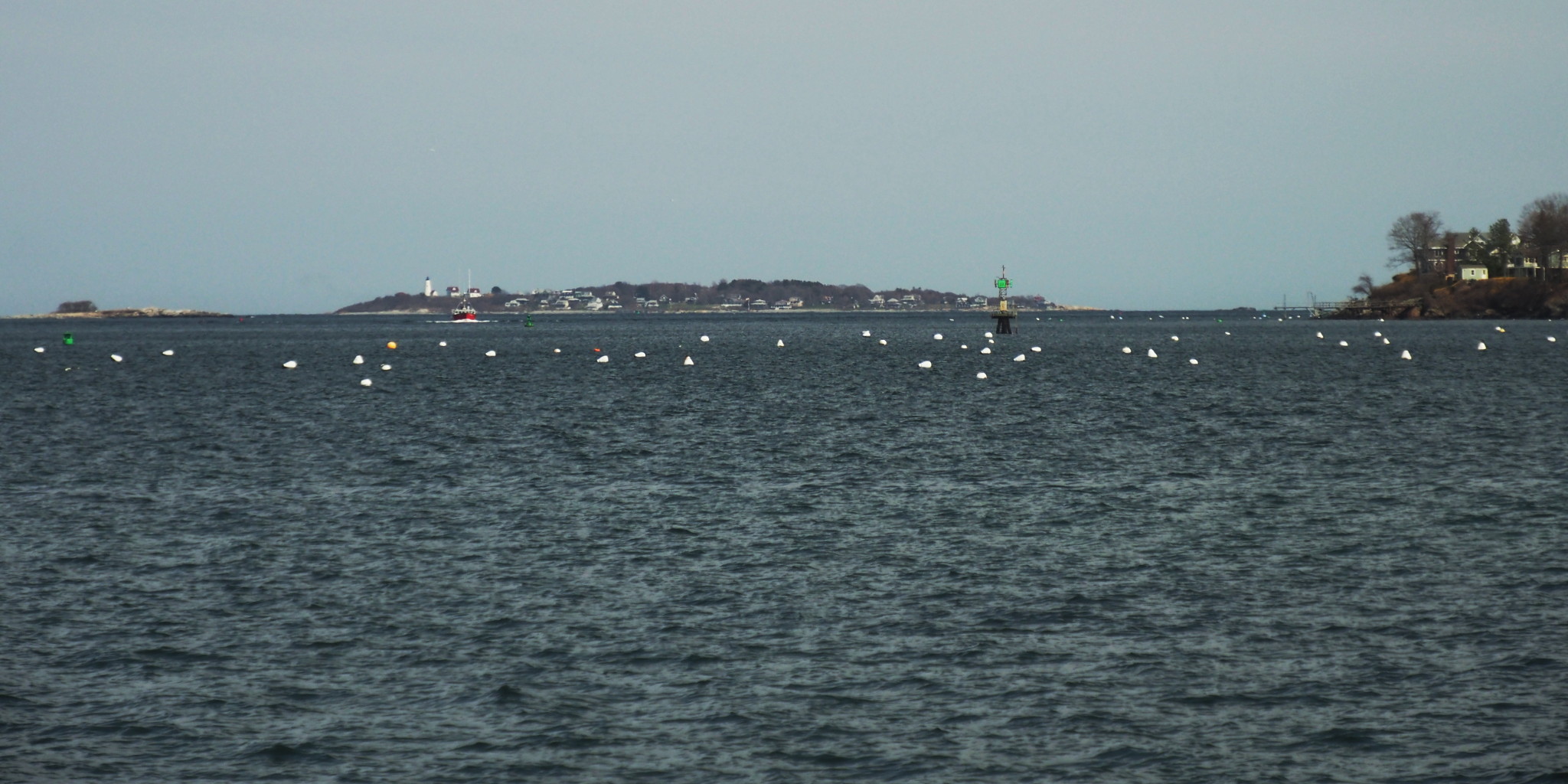
Meanwhile, looking at the towers and lighthouses, we were already by Manchester Harbor. We marveled at the completely unexpected number of boats anchored outside of the harbor, called the local yacht club by VHF, and got the final response that they were out of available moorings of the night and couldn’t help us at all.
In theory, we could’ve anchored outside as well and just spent the night there — with that feeble wind, it wouldn’t be a problem at all — but somehow I already set my mind on hiding in a harbor. And so we headed towards Marblehead, which has a huge harbor filled with mooring balls. Having sailed across the entire Salem Sound, we called all the Marblehead yacht clubs by phone ab by radio, and got the same response: sold out for the night. Sold out! In one of the largest sailing harbors in the US!
This was, I must admit, totally unexpected. Meanwhile, the daylight was running out, and we had to decide where to spend the night already. And so we continued our travels in Salem Sound and this time headed towards Salem: its harbor, unlike Marblehead and Manchester, has some modest room for anchoring. That was our very last backup plan in case there would be no mooring available in Salem as well.
And what do you think? There was no mooring available in Salem as well! So we were at the last backup plan now. The best anchorage was taken by two huge sailing catamarans, but we found a small space in the water between the channel and margins of the mooring fields. After two failed attempts, the anchor finally caught the bottom well, and our trip for that day was over.
Relatively few recreational boaters bother with anchoring. Their loss! It’s a great alternative to mooring and docking, which, as we just learned, could be just not available; besides, anchoring is completely free. Though sometimes it does take some work.
But still, we managed to do all that before the sunset. However, it felt too late to go ashore–or we just were too lazy — so Sergey had fixed some dinner, we were sitting in the cockpit, drinking rum, and watching the sunset so beautiful, that even a power plant silhouette could not spoil it.

And nurturing the rum and appreciating the sunset that evening I thought that overall I was quite enjoying such a lifestyle.
(Continued here.)
Subscribe via RSS